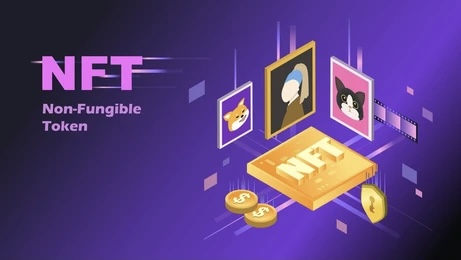NFTs have become a worldwide phenomenon since their explosion in 2017, and you can guess why. A DappRadar report shows that sales volume reached $25 billion in 2021, a significant increase from $94.9 million recorded the year before. The interesting is the industry is worth over $40 billion, edging closer to the total value of the worldwide fine art market. This came from Chainalysis.
Are these just mere numbers with no underlying meaning? Do you think this digital asset class has come to stay and is not a fad? We believe NFTs are revolutionary, and here are irrefutable reasons to support our claim that they are here to stay.
Art
NFTs promote digital ownership. So far, NFTs are the biggest disruptors of the fine art world, with many artists leveraging blockchain to mint and auction their works to investors. Winklemann and Pak are amongst the few highest-selling digital artists of all time. Larva Labs, the creator of CryptoPunks, has earned millions off the pixel computer-generated images.
Even U.K.’s wealthiest living artist Damien Hirst got into the act by launching his NFT series called “The Currency” in 2021. You may ask, why would a renowned artist venture into NFTs? To make more money? That has always been the goal, but it’s something else. Launching an NFT of his artworks would reach a wider audience faster than the traditional way.
Last year, the International Council of Museums discovered that over 30% of museums reduced their staff, and nearly 6% that shut down due to the onset of Covid-19 may not open. How would artists fare if their artworks aren’t exhibited in the museums? Artists who depend on museums to exhibit their works may never get the chance, and their earning potential would be near zero.
With NFTs, many traditional museums are going digital. That’s even better for digital artists, as they can put up their work on display virtually and have people place bids. Royal Ontario Museum is digitizing its collections. Ethereal Aether, with 36 NFTs, including the popular CryptoPunk, is also a digital museum. One of the curators, Anastasia Garnova, said that the pandemic caused millions of people to stay at home and forced museums to close. That’s where interest in digital art began skyrocketing.
Like Damien, many artists have seen the light because of NFTs. They have given artists a lifeline and allowed them to expressively express themselves in a way that wouldn’t be possible in the physical world, especially with the advent of the deadly Covid-19 virus. NFTs have helped artists significantly cut the cost of marketing and exhibiting artworks in museums and maximized their earnings. That’s killing two birds with one stone.
Varying Use Cases
Digital art is just one of the many use cases of NFTs. Until a year ago, digital art was the only utility of NFTs. They have expanded to other sectors, such as entertainment, gaming, fashion, etc., solving real-world problems.
NFTs have become a symbol of identity and social status. Some online communities and private clubs require you to own a specific type of NFT to gain entrance. For example, GCBC offers a unique NFT to its members to show membership.
In the gaming world, NFTs play a vital role. They have accelerated the adoption of DeFi. Many gamers are into play-to-earn games to get in-game tokens representing different NFTs. These can fetch real money when they are sold in the marketplace.
We can say that apart from games, music and entertainment are sectors that were disrupted by NFTs the most. Music acts, such as Kings of Leon, have used NFTs to sell their music. Recently, Snoop Dogg laid out plans to turn his Death Row Records, a label he acquired before the super bowl performance, into an NFT label.
Adidas and Nike are using NFTs to sell their merchandise in the metaverse and enhance customer engagement.
Given the unique use cases of NFTs, it’s obvious that this digital asset class is not just evolving but solving problems. Will NFTs disrupt more sectors in 2022? It is possible.
Final Take
Have NFTs come to stay? Yes! And they will for a long time, given their awesome utilities and the real-world problems they solve. In 1991, Microsoft Founder Bill Gates once said that a time would come when people would no longer hang artwork on the wall but projected onto their digital screens. More than two decades later, it’s happening.
There are still some minor concerns about their sustainability, however. For instance, NFTs are pretty bad for the climate and environs, as they rely on the same energy used to mine cryptocurrencies. This releases massive carbon emissions into the atmosphere. Another issue is they are being used to launder money and evade taxes. We believe some regulations can mitigate these problems.
This is a Contributor Post. Opinions expressed here are opinions of the Contributor. Influencive does not endorse or review brands mentioned; does not and cannot investigate relationships with brands, products, and people mentioned and is up to the Contributor to disclose. Contributors, amongst other accounts and articles may be professional fee-based.

